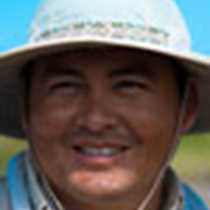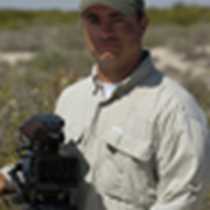Mesmerized by the wilderness of the western Galápagos, we headed back to the central part of the archipelago. Our morning outing took place on a golden beach known as Espumilla. Many early risers joined us for a walk along the beach, where blue-footed boobies and pelicans entertained us with their beautiful fishing technique known as plunge diving. Ghost crabs harvesting food turned the beach red, while in the distance Galapagos hawks glided over the dense mangrove forest looking for small reptiles.
Later in the morning, we explored the bizarre volcanic landscape. Fields of black basaltic lava and tuff cliffs along the coast told of recent volcanic activity. Snorkeling in the warm waters of Buccaneer Cove was impressive due to the mosaic of species we encountered, such sea lions, eagle rays, white-tipped sharks, green sea turtles and a variety of fish. Meanwhile, above water, blue-footed boobies and pelicans hunted for black-striped salemas.
In the afternoon we anchored in front of James Bay, which Charles Darwin visited during his voyage around the Southern Hemisphere on HMS Beagle in the 1830s. Once inhabited by salt miners from Guayaquil, the island is now a national park. Conservation efforts by Lindblad Expeditions and National Geographic have helped the local flora and fauna recover from the devastating effects of invasive species such as goats and pigs.
Some guests enjoyed a peaceful hike along the Santiago shoreline, observing marine iguanas, Galapagos fur sea lions and migratory birds, while other guests went snorkeling one more time. This fairytale day ended with a sunset that enthralled us.






